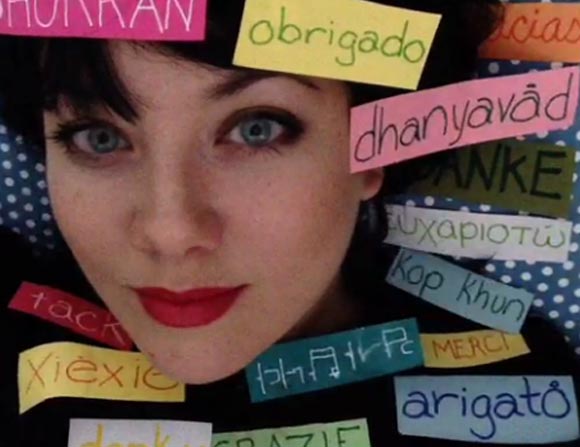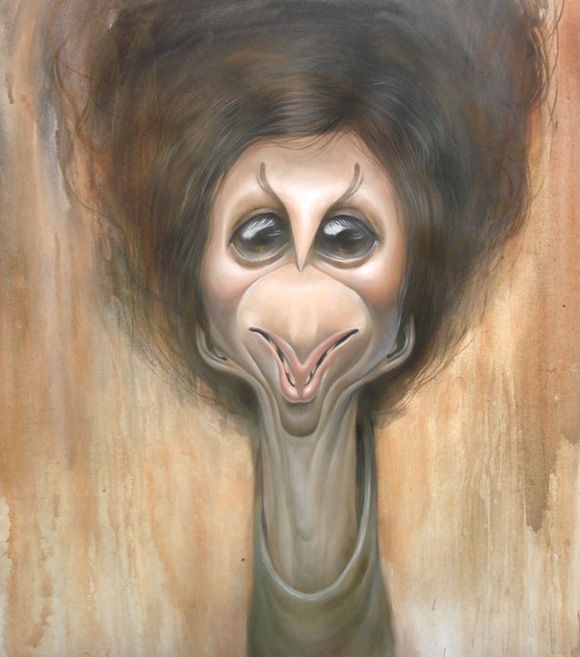Add a Comment
Viewing: Blog Posts Tagged with: Vine, Most Recent at Top [Help]
Results 1 - 6 of 6
Blog: Galley Cat (Mediabistro) (Login to Add to MyJacketFlap)
JacketFlap tags: Amazon, Digital, Vine, Instagram, Add a tag
Blog: Cartoon Brew (Login to Add to MyJacketFlap)
JacketFlap tags: Internet Television, Retirement, Vine, Hayao Miyazaki, Pinot, Add a tag
Indonesian animator Pinot created a series of Vines to commemorate the retirement of Hayao Miyazaki. You’ve got to hand it to him: he understands the value of every frame and how to get the most out of his six seconds. Pinot explained his love of Miyazaki’s work in an article on Mashable:
My father is a comic illustrator and animator. He followed Walt Disney’s technique and style — always with 24 frames-per-second and all moving objects, even for faces and mouths. ‘In animation, every object has soul. So we move everything except the background,’ he would tell me. He never liked Japanese anime style with its stiff objects and fewer frames per second.
Then, Hayao Miyazaki changed everything. Miyazaki proved that animation with fewer frames could also tell great stories. Best of all, Miyazaki brought a new type of childhood fantasy — not the usual tale of Prince Charming. His stories deliver messages of ecological problems, nature-life reality and strong, high-functioning families. As parents of three kids, I am happy to have Miyazaki’s movies fuel their creativity — a great balance for the fare of Disney princesses.
One of my favorite quote[s] from Miyazaki: ‘Hand drawing on paper is the fundamental of animation.’ Most people claim they cannot draw, but I’m sure [they] have doodled on a napkin paper. People don’t realize when their hand holds a pen and dances on paper to create swirly lines, they’re creating animation.
How does Pinot do it? Don’t worry, there’s a behind-the-scenes Vine, too:
Add a CommentBlog: Cartoon Brew (Login to Add to MyJacketFlap)
JacketFlap tags: Ideas/Commentary, Twitter, Vine, Pixilation, Pinot, Brock Davis, Internet Television, Ian Padgham, Meagan Cignoli, Micro-animation, Add a tag

Twitter’s six-second looping video platform, Vine, is not revolutionary, but it is an important evolutionary development in online video. The strength of the format is two-fold; firstly, it brings filmmaking tools to the masses, and secondly, it recognizes that the mobile Internet should have its own micro-formats (with built-in looping) because traditional formats—shorts, features, commercials—don’t provide enough options.
The Vine is something that I wholedlheartey endorse because the shortening length of online animation has been something that we’ve been promoting for the past couple years. Cartoon Brew was, in fact, the first film/animation site to recognize the merit of micro-film clips and create an exclusive space for featuring them. We introduced the Animated Fragments column in 2011 with the idea that there were many creative bits and pieces of animation that didn’t fit into any conventional format. In our first post, the shortest animation was only eleven seconds long.
There was a difference though. No one created those ‘fragments’ with the intent of expressing a complete thought. They were interesting experiments but not whole ideas. The six-second Vine format has encouraged filmmakers to think of six seconds as a filmmaking length in which an entire idea can be expressed. Clearly, the filmmaker is limited in the scope of their idea by the Vine’s running time, but it’s also surprising how much content can be squeezed into six seconds.
Animators who use Vine are employing a surprisingly wide variety of techniques that include paper cut-out, hand-drawn, stop motion, pixilation, and mixed media. Often times, the most popular animators using the format don’t come from a traditional animation background. They are artists from other creative disciplines who have become animators overnight.
The real revolution of the Vine is its software, which is the easiest (and most accessible) animation creation tool ever made—even easier than creating animated GIFs. The Vine app will play an important role in moving animation out of the realm of the specialist and into an art form of the masses. Twitter, for its part, continues to upgrade its software and make it more animation-friendly. Last week, they released an updated version of the app which added gridlines, camera focus, and most importantly, onion-skinning (or as Twitter calls it, ‘ghost tools’).
The Vine platform, though less than six months old, has already had a significant impact on the animation world. Through its limitations, it has opened the door for many people to try animating for the first time as well as created a respectable new length for micro-animated shorts. Whether the format itself lasts or not, Vines have changed how we think about Internet animation.
See also: “How Etsy Is Using Vine and Stop Motion to Build Its Brand”
Here are examples of four artists who are currently creating animation for Vine:
Pinot
Brock Davis
Meagan Cignoli
Ian Padgham
Add a CommentBlog: Cartoon Brew (Login to Add to MyJacketFlap)
JacketFlap tags: Tech, Internet/Blogs, Etsy, Vine, Stop Motion, Clare McGibbon, Nicole Licht, Add a tag
Vine, Twitter’s mobile looped video app, is less than a year old and still remains a new frontier. Not everyone is sure how to use it and like most of the Internet, the common subject matter of Vines center around cats, babies and high school kids. For that reason, the people who are experimenting with the capabilities of Vine as a medium truly stand out.
Etsy has recently produced a handful of stop motion Vines that are not only fun to watch, they reinforce the DIY aesthetic that defines the online market’s brand. Etsy’s initial Vines were a product of Hack Week, an event where the company’s engineers are encouraged to abandon their regular work and focus on any project of their choosing. Nicole Licht and Clare McGibbon, one of Etsy’s in-house designers and support staff members, respectively, decided to take advantage of the event. “The goal for us during that week was to jump start Etsy’s participation on Vine, experiment, and collaborate across teams,” Licht told Cartoon Brew.
Hey, we've got a surprise for you. Open the box http://t.co/k109LUw4FG #craftparty
— Etsy (@Etsy) May 16, 2013
Even though the team had no experience in stop motion animation, they set out to make at least one video a day. Prior to each shoot, they sketched out their ideas and gathered craft supplies, but kept their agenda loose. “We found that improvising and seeing how the materials responded in the moment made the most sense,” said Licht. With just natural lighting, a lightweight tripod, and an iPhone mount, the process of making a single six second vine took anywhere between one and four hours. “We really had to just go for it once we started shooting,” added Licht. “With Vine, you either post or not. There are no editing or saving functions, so we never reshot.”
Few other companies, thus far, have discovered how to effectively use Vine. They could certainly take a lesson from Etsy, where employees are given the freedom to take new approaches and experiment with ideas and tools along the way.
Add a CommentBlog: Cartoon Brew (Login to Add to MyJacketFlap)
JacketFlap tags: Illustration, Caricature, Vine, Basil Wolverton, Marlo Meekins, Artist of the Day, Add a tag

Marlo Meekins’s observational, drawing and painting skills are exceptional. She fantastically distorts specific shapes and forms of peoples’ bodies to Basil Wolverton extremes. Her sense of humor and fearlessness in execution are equally responsible for the humorous, grotesque, appeal of her work.

She has an older blog with many oil paintings and drawings, and a more frequently updated Tumblr with more of her comics and short gag cartoons.

Live drawing as a caricature artist is a form of performance itself, so it isn’t a stretch that Marlo has expanded her artistic output to live-action videos and, more recently, Vine pieces.




Blog: The Brown Bookshelf Blog (Login to Add to MyJacketFlap)
JacketFlap tags: 28 Days Later, Celise Downs, Uncategorized, 28 Days Later, Celise Downs, Add a tag
 Celise Downs was born, and currently makes her home, in Phoenix, AZ. Her love of writing began in the 7th grade as a way to dispel recess boredom. Her talent was further encouraged by a high school English teacher. She considers her novels to be about the high school experience with a dash of intrigue.
Celise Downs was born, and currently makes her home, in Phoenix, AZ. Her love of writing began in the 7th grade as a way to dispel recess boredom. Her talent was further encouraged by a high school English teacher. She considers her novels to be about the high school experience with a dash of intrigue.
“There’s the normal stuff that teenagers go through, like acne, peer pressure, and angst over the opposite sex,” she says. “Then there’s the not-so-normal, unexpected stuff. I happen to like writing about both.”
Her first book, Secrets and Kisses (Gemini Mojo Press), came out in March 2004 and was quickly followed up with Dance Jam Productions (Gemini Mojo Press) in September 2004. Her current project is Draven Atreides, Teenage FBI, a series about a 16-yr-old African-American girl who gets recruited by the FBI as an informant. You can find out more about more about Celise at her website (www.celisedowns.com) or on MySpace (www.myspace.com/celisedowns).
For this installment of 28 Days Later, the Brown Bookshelf is happy to present author Celise Downs!
While Dance Jam Productions is clearly suitable for the young adult market, a large portion of the novel would have been suitable for the adult market as well. Why did you decide to become a young adult author, as opposed to an adult author?
I have a lot of high school memories and even though I’m in my late 30’s, I’ve unconsciously immersed myself in teen culture. My favorite shows are “Smallville”, “Supernatural” and “Kyle XY”. I go see the teeny-bopper flicks and subscribe to some of the teen magazines. I still think in a teenage mentality. I would like to eventually go into adult romance (since I’m addicted to Harlequin Blaze), but right now I don’t think I could effectively write for an adult audience. I’m a huge believer in signs when it comes to my writing and right now the sign are telling me to stay with YA. For now.
 In Dance Jam Productions, Mataya Black Hawk is hiding a very dark secret from her friends. Are there any issues that you feel are “taboo” in young adult fiction?
In Dance Jam Productions, Mataya Black Hawk is hiding a very dark secret from her friends. Are there any issues that you feel are “taboo” in young adult fiction?
No. A lot of YA authors are “crossing the line” so to speak and covering topics like drug addiction, alcoholism, abuse (of any kind), suicide, homosexuality, etc. For those that address those issues in a non-preaching type of way, I say more power to them.
Is there any message or theme that you want readers to get from your novels?
Would it be terrible of me to say ‘not really’? I’m all about the entertainment factor. As I mentioned above, some authors write about “real” issues. But when teens read my books, I want them to escape. I don’t think they should have to deal with real life in “real life” and when they pick up a book, too.
You speak a little on your website about how your childhood inspired both Dance Jam Productions and Secrets and Kisses. Which character are you like more, Mataya or Skylar?
If I had to choose, I would say Mattie. Dancing was a big thing for me during high school and college. Several years ago, I took a hip-hop dance class and had a blast. I’d like to get back into it eventually. I also have two best friends—both whom I’ve known for over twenty years each—and tell them just about everything. I don’t trust easily, but when I do, I’m loyal for life.
 There are very few African-American authors that write contemporary fiction from the point of view of a character that isn’t African-American, yet you did this with Skylar Knight, the protagonist of Secrets and Kisses. Can you talk a little about why you chose to create this character as you did?
There are very few African-American authors that write contemporary fiction from the point of view of a character that isn’t African-American, yet you did this with Skylar Knight, the protagonist of Secrets and Kisses. Can you talk a little about why you chose to create this character as you did?
I also did it for DJP; Mataya is Hawaiian. All my life, I’ve lived in two places: Phoenix, AZ and Reno, Nevada. I had the best childhood in Reno (that’s where I met one of the BF’s I mentioned above). In the neighborhoods we lived in, we were the only African-American family. In the schools my older sister and I attended, we were always the minority. Even though that was the case, my parents were very good about teaching us about prejudice and seeing the world in “color”.
There’s the old adage of “write what you know” and I know about being black in a sea of white. I truly am a product of my environment and I think writing from that aspect is very unique. However, my next character, Draven Atreides, will be African-American. She’s light-skinned (light enough to pass for white, in fact), but African-American all the same. She’s the main character in my upcoming 6-book (maybe more) YA series, Draven Atreides: Teenage FBI, about a 16-yr-old girl who’s been recruited by the FBI as an informant. Book One, A Royale Pain, should be coming out in Winter 2008 or early 2009. You can get to know her a little bit by checking out her blog at http://www.1800snitch.wordpress.com.
You’re a non-traditionally published author, which has both positives and negatives. Can you speak a little about the pros and cons of self-publishing?
No royalty advance and marketing/promoting. Those are the two main cons for me. When I was younger, I had a lisp and a mild stuttering problem. I was very shy and would rather stuff my face in a book than talk to anyone. I’ve since outgrown the lisp, but the stuttering still emerges on rare occasions. If I could just do the writing and leave the marketing/promoting to someone else, I would do it in a heartbeat. It shouldn’t be hard to talk about something you love, but for me, it can be a little difficult. I’m slowly but surely getting used to public speaking.
As for the pros, it’s all about control. I have complete control over the price, the design, the release date…everything. For a long time, I was on the fence about going the traditional route with the YA series. I even went so far as starting the agent search last year. I got a lot of rejections, some of which had great criticism, and some requests, too. But I keep having this nightmare about the book covers: I’m afraid they’re going to put a white girl on the cover when my character is black. In traditional publishing, when you’re a newbie author, you have so little control. I have an idea of how the covers should look, so I’m going to continue to do it my way.
Non-traditional publishing, aka “self-publishing”, has gotten a bad rap from day one. Manuscripts published as-is, mistakes and all; shoddy cover designs…basically it looked like you published it yourself. At home. But it’s gotten a lot better in the past several years. We know more now than when it first started, and advances have been made. While there are still companies out there that require authors to pay upfront, others require the author only pay a portion of the cost. And then there are companies like mine that I refer to as “independently traditional”: the advances may be very small or nothing at all (but the percentage of royalties are bigger) and publishing is at no cost to the author.
When I started my company, it was with the future intent to publish not only my own material, but that of young adults and authors writing for young adults as well. In the four years that I’ve been in business, I’ve never taken on other authors. This year, I’ve decided to become an independently traditional publisher for young adults only. I hope to be re-designed, operational, and taking on teen authors by June 2008.
People are going to write books that may not fit into the traditional “hole”. People are not going to want to wait 1-2 years to see their work published. People are going to create something just for family, friends, organizations, associations, etc and not want to take it to a copy shop. Publishing non-traditionally gives them a choice. It’s not going to be right for everyone, but they’ll have the right to choose. They know now that traditional publishing isn’t the only way they have to go.
Who were some of your favorite authors growing up?
I didn’t have any. I started reading adult romance books when I was in high school and have yet to stop. However, I still have my copy of Shel Silverstein’s Where the Sidewalk Ends. The poems are amazing.
Do you have any advice for aspiring authors?
Edit, edit, edit…and then get someone to do it professionally; it’s always better to have a second pair (or third, fourth and fifth pair) of eyes, well, eyeball your work. Surround yourself with a positive support system and kick negativity to the curb. Be open to your surroundings and your environment because every day, every thing, is potential story material.




